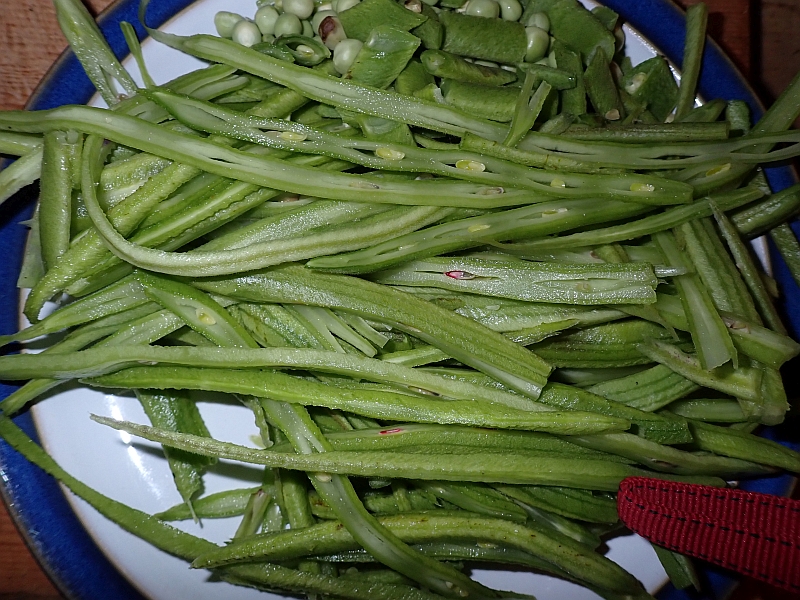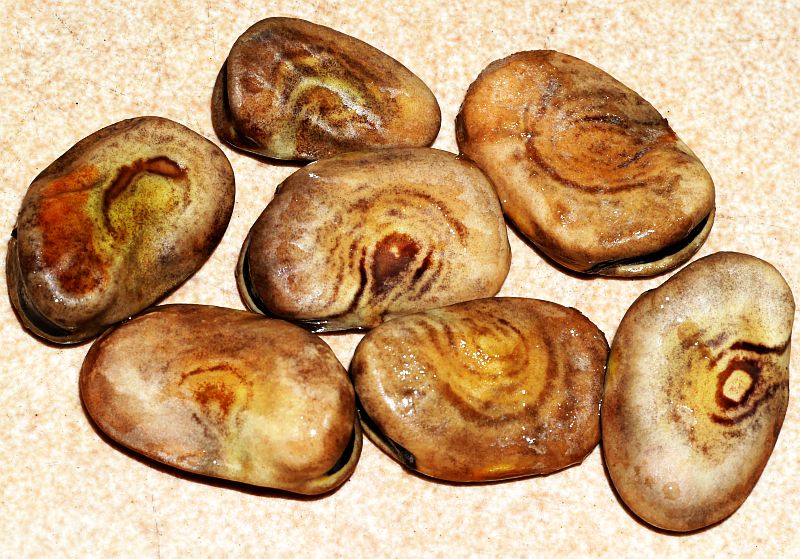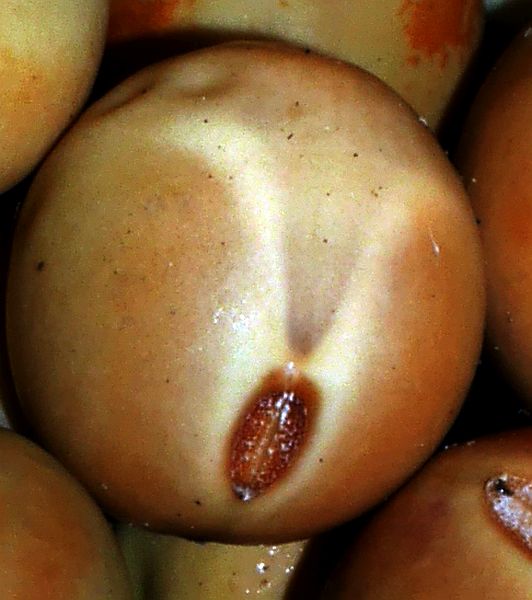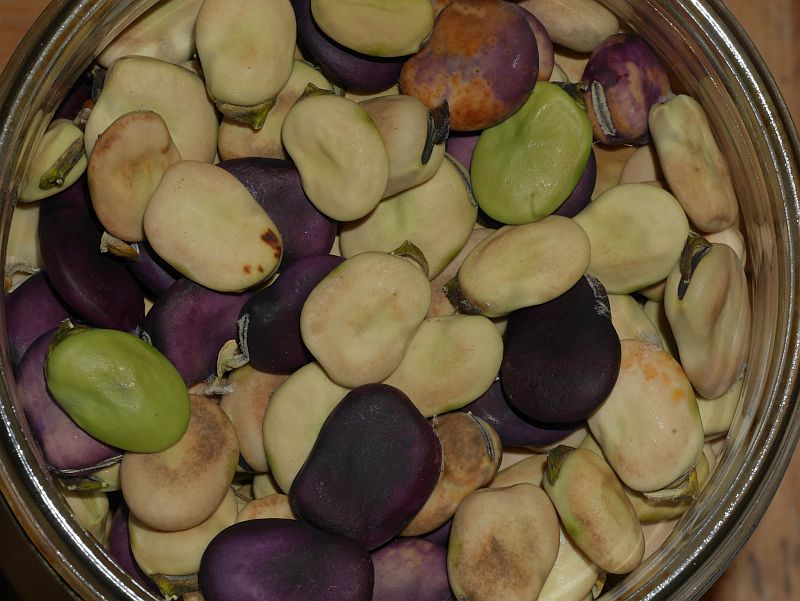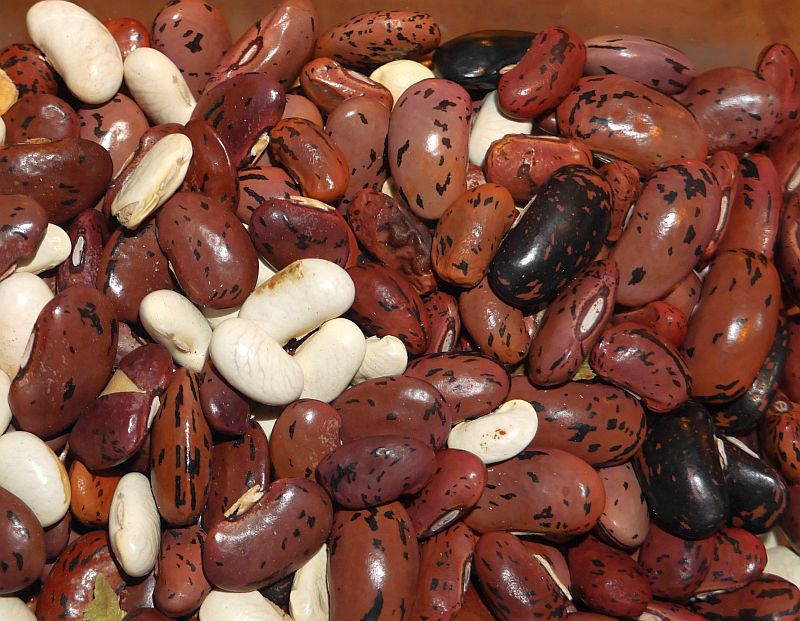After many years of trying, I managed to get a decent crop of dried runner beans / løpebønner* (Phaseolus coccineus). My own garden is a bit too cold due to the shady conditions on a rather windy spot. Last year I grew a selection of 15-20 early varieties sourced from the German gene bank IPK Gatersleben and commercial suppliers which I grew successfully in the sunnier community garden (Væres Venner).
They were made into delicious falafels, accompanied by living room grown Kandahar cress (karse) and wild buckwheat / vill bokhvete and turned into gourmet food with a couple of dandelion flowers from the windowsill!
*In Norwegian, these beans are known usually as blomsterbønner (flower beans) and most often used as an ornamental. I prefer to call them løpebønner to better reflect that these are much more than an ornamental!
Tag Archives: Phaseolus coccineus
Local runner bean landrace

Mini-glut of runner beans
The climate is such here that starting runner beans / blomsterbønner (Phaseolus coccineus) in mid-May they normally aren’t ready to harvest until September and the first frosts in October usually stop their development. Growing seed to maturity is also a challenge in many years, so it’s difficult to select better and earlier varieties more suited to my climate. Early October and we are only just managing to eat all the runner beans. Only once in the almost 40 years I’ve been growing them here was there such a big harvest that I had to preserve them. Not having a freezer, they were salted for later use. These were used in a fish soup this week, sliced using an English runner bean shredder! I grew two varieties this year, the heirloom Painted Lady with bicoloured red and white flowers and red flowered Firestorm with very long stringless beans. Firestorm was a little later. They were transplanted outside at home and in the Americas part of the World Garden at the Væres Venner Community Garden.